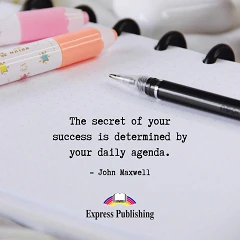“Children already come to us differentiated. It just makes sense that we would differentiate our instruction in response to them." (Tomlinson, 1999)
Teachers know that every class includes diverse learners – some struggling, some advanced, and all with different life experiences, learning preferences and personal interests.
Differentiated instruction adapts instruction to meet the needs of individual learners, providing all students with an appropriate level of challenge and the appropriate support to help them reach their individual learning goals.
In that context, a differentiated classroom offers multiple ways for students to:
- access content,
- process and make sense of concepts and skills, and
- to develop products that demonstrate their learning
Therefore, educators are invited to rethink traditional educational practices or what they personally experienced in their schooling and customize the complexity of instruction, so all students experience learning success.
Customized instruction has nothing to do with individualized instruction, as it is not an attempt at having individualized lesson plans for every student. However, it is a systematic way of maximizing learning that is both rigorous in addressing high standards for all students yet personalized enough to reflect individual learner characteristics and needs.
How can we approach the concept of Differentiation?
“Differentiated instruction is a teaching approach in which educational content, process, and product are adapted according to student readiness, interest, and learning profile” (Starr, 2004).
Differentiating the process of instruction-giving requires the use of many instructional techniques and materials to enhance and motivate students. A teacher should make activities different and not just add more of the same types of activities – for example giving higher-achieving students twice as many problems to finish.
Differentiated resources promote thinking skills and the students' ability to express themselves more effectively, thus giving them the chance to discover their innate talents and skills.
How can I differentiate instruction efficiently?
Step 1: Get to know your students
This can be achieved through surveying past records of student performance so that teachers will be fully aware of their capabilities, prior learning, social background, etc.
It is really important to get to know students informally as well, maybe through an interview, or an open discussion in the classroom, or by asking students to respond to an open-ended questionnaire with key questions about their learning preferences.
Step 2: Make use of a variety of different teaching strategies
It is only obvious that “one size does not fit all” so if we take that into consideration, it is imperative that a variety of different teaching strategies be used in a differentiated classroom.
Among many teaching strategies, there are four that are widely used and worth mentioning: Direct Instruction, Inquiry-based learning Cooperative Learning (Flexible Grouping), and Information Processing Strategies.
Direct Instruction is teacher-centered and is the most traditional teaching strategy. In a direct instruction lesson the teacher usually spends some time lecturing; then guides the students through a complex problem, with the problem broken down into simple steps; then the students are given, one by one, the simple steps to carry out on their own; finally, the students are given one or many sample problems to accomplish on their own.
Inquiry-based learning is a student-centered strategy, which is based on questions generated from the interests, curiosities, perspectives or experiences of the learner.
Cooperative Learning (flexible grouping) is a successful teaching strategy in which small teams, each with students of different levels of ability, use a variety of learning activities to improve their understanding of a subject.
Finally, Information Processing Strategies include memorization, reciprocal teaching, graphic organizing, scaffolding or webbing, etc.
Step 3: Make use of a variety of challenging and motivating activities
Technology applications, interactive whiteboards, e-books, animations, group activities, videos, peer tutors, and activities that allow for interaction enhance learning opportunities.
Also bear in mind that the books and resources used in the learning process should be age-related, up to date, with a variety choice in activities, providing students with a lot of different kinds of information and texts.
Step 4: Make use of a variety of assessment techniques:
In a differentiated classroom, a variety of assessment techniques can include portfolios, rubrics, performance-based assessment, or knowledge mapping, besides the traditional testing and marking process.
And remember:
Fair is not everyone getting the same thing.
Fair is everyone getting what they need!
.png)










